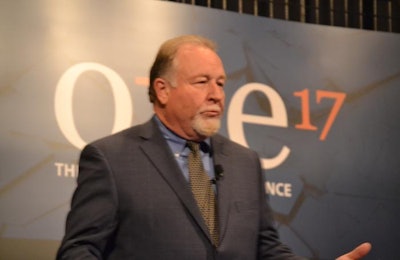
The demand for pork raised without antibiotics is growing, and at the present time, producers have a solid financial incentive to raise their pigs without using antibiotics. But how long will that incentive last?
Dr. David Funderburke, chief operating officer of Cape Fear Consulting, speaking recently at ONE 17, The Alltech Ideas Conference, said that many pig producers have not been warm to the idea of raising their animals without antibiotics, but he said it isn’t something that should be resisted.
Citing the old adage, “Change the things you can change, accept the things you can’t change, and have the wisdom to know the difference,” Funderburke added, “My wisdom says that we’re not going to stop the movement in the direction of fewer antibiotics. You need to get on board.”
Financial incentives
Funderburke said that in the United States today, most systems are willing to pay producers up to $25 per head for pigs raised without antibiotics.
In the United States today, in most systems – not all systems -- that are live antibiotic-free pigs, they are willing to pay the producer up to $25 per head more than
“If you can make US$25 per animal more, because it was raised without antibiotics from the time it was weaned to the time it was marketed, would you do it? There’s your incentive,” said Funderburke.
And while it costs more to raise pigs without antibiotics, Funderburke said with an extra $25 per pig, that more than offsets the added costs of production.
But Funderburke wonders if that premium price will still be offered in the near future.
“The big question that still remains in our country is how long can the market continue to pay $25 per head bonus for antibiotic-free pigs. We don’t know that yet. We don’t know the size of the market,” he said.
“Maybe we’ll get to the point someday if you don’t raise antibiotic-free, you’ll get penalized,” Funderburke added.
Need for pork raised without antibiotics will remain
While there are plenty of people who are willing to pay extra at the grocery store for pork raised without antibiotics, there will also always be people less concerned about the higher-priced niche pork products.
“When you are hungry and you don’t have a lot of income, you’re not demanding antibiotic-free pork,” he said.
“The consumer today does not have the income to be able to afford higher cost meat. We’ll always need that traditional production, I think, to feed a part of our population. It’s just that more and more of our population is going to be demanding antibiotic-free or animal welfare, and all these things that they think or feel like is a good emotional decision.”


















